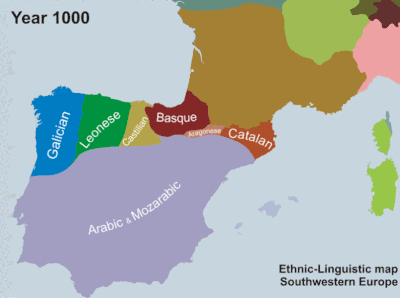Aragonese language

Aragonese (in its own language: aragonés or sometimes fabla) is a Romance language spoken in northern Aragon, on the southern central slopes of the Pyrenees. It is also promoted by groups of enthusiats in the rest of Aragon (Spain).
Aragonese was often considered as a Spanish dialect in traditional Romance linguistics but it is now more and more viewed as an autonomous language by most specialists, since it has a very old, independent literary tradition, some original features and also features shared with Catalan and Occitan (not only with Spanish).[1]
This minority language is theoretically recognized by several statements of the autonomous region of Aragon but no active language policy nor any official statuts have been implemented yet. So Aragonese remains severely threatened by the continuous advance of Spanish, the state language. Nonetheless, an active cultural movement has worked since the 1970s to promote Aragonese.
There are ongoing processes of codification and standardization.
Aragonese emerged near the 8th century in what is today northern Aragon, southern Navarre and La Rioja, therefore specialists sometimes call Navarro-Aragonese this first stage of the language. It was the local evolution of popular Latin with an interesting Basque substratum. The first Navarro-Aragonese written text, the Glosas emilianenses, was redacted in the 11th century in La Rioja. Between the 11th and the 15th centuries, Aragonese was spread southwards thanks to the Reconquista and the expanding Kingdom of Aragon, replacing the Mozarabic and Arabic languages all over Aragon, western Valencian Country and part of Murcia. In the same period Aragonese enjoyed an increasing use and prestige in literature and all sorts of writings. But since the 15th century, Castilian Spanish has become the dominating state language of the Kingdom of Spain, forcing Aragonese to move back toward northern Aragon and to dwindle rapidly. The recent cultural movement which has defended Aragonese since the 1970s might be the last chance of reversing the language shift.
Footnotes
- ↑ METZELTIN Miguel (2004) Las lenguas románicas estándar: historia de su formación y de su uso, Oviedo/Uviéu: Academia de la Llingua Asturiana